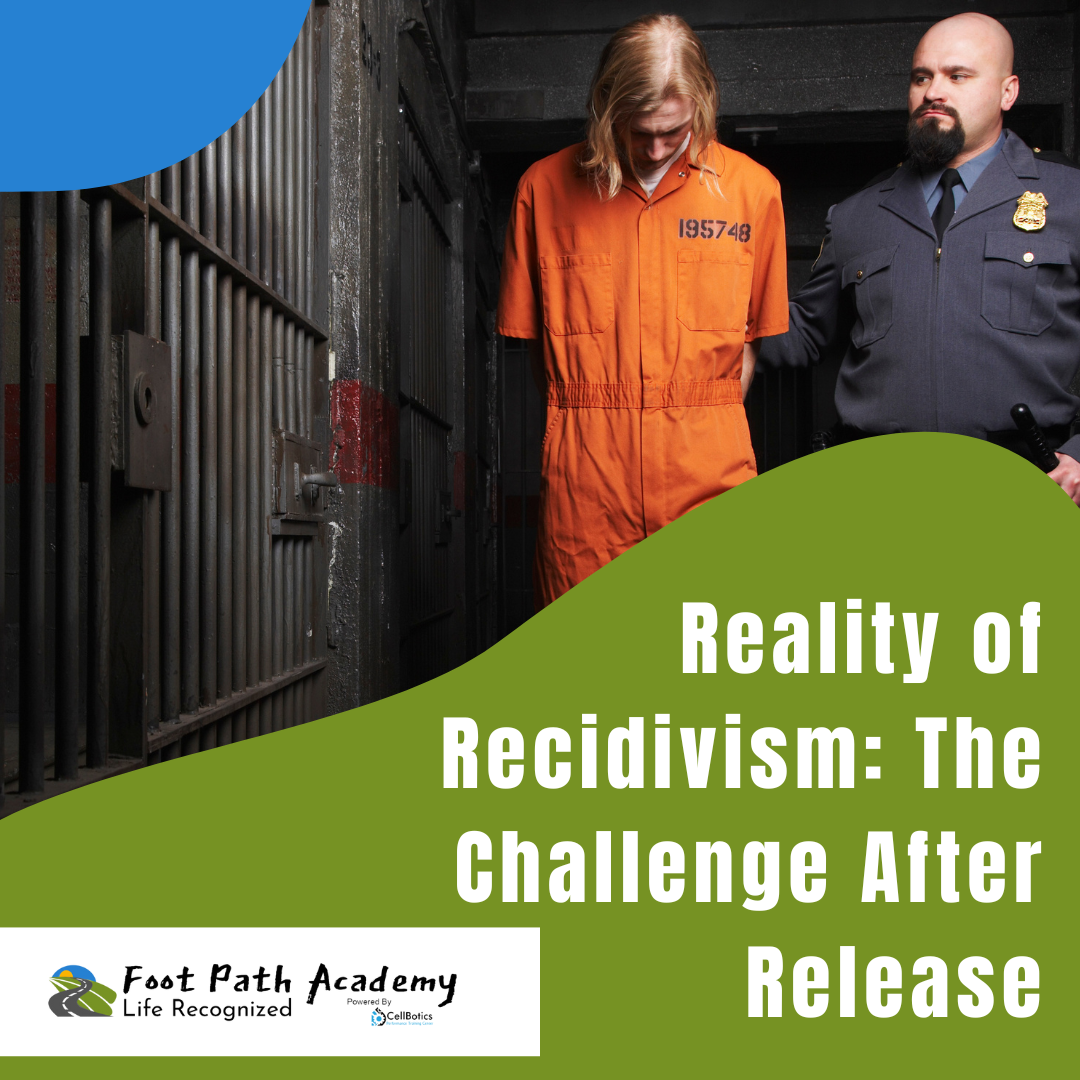Reality of Recidivism: The Challenge After Release

Reality of Recidivism: The Challenge After Release

When the Bars Open, but the Struggle Persists
The journey from prison to freedom is often riddled with challenges, placing a heavy burden on individuals who have paid their debt to society. The path that leads individuals to incarceration is complex, influenced by a multitude of socio-economic, psychological, and systemic factors.
Many individuals find themselves in the criminal justice system due to a lack of opportunities, poverty, and inadequate access to education. The cycle often begins with limited educational prospects, which can lead to involvement in low-paying jobs, a vulnerability to crime, and a spiral into the criminal justice system. This unfortunate cycle disproportionately affects marginalized communities, further perpetuating the cycle of recidivism.
The Alarming Statistics

The statistics surrounding recidivism are a stark reminder of the uphill battle that released prisoners face when trying to reintegrate into society. Within three years of release, a staggering 68% of individuals who have served time in prison find themselves arrested for a new crime. This high rate not only indicates the challenges of reentry but also raises questions about the effectiveness of the current rehabilitation system.
The cycle of recidivism has profound implications for individuals, families, and communities. The impact is not only felt in terms of public safety but also in perpetuating the cycle of poverty and disenfranchisement. To break this cycle, innovative solutions are needed.
There is still HOPE!

While specific statistics may vary based on the program, location, and other factors, research consistently shows that education programs for incarcerated individuals can significantly reduce the likelihood of recidivism. The percentage decrease in recidivism can vary, but studies have indicated that participation in education programs can lead to a substantial reduction in re-arrest rates.
One notable study, conducted by the RAND Corporation, found that incarcerated individuals who participated in education programs while in prison were 43% less likely to return to prison within three years after release compared to those who did not participate in such programs. This study, which analyzed data from multiple states, provides compelling evidence of the positive impact of education on reducing recidivism.

Furthermore, a report from the Institute of Education Sciences (IES) found that participating in correctional education programs can lead to a 13-percentage-point reduction in the probability of re-arrest compared to those who do not participate in such programs. This reduction in recidivism rates not only benefits the individuals involved but also contributes to public safety and can lead to cost savings for the criminal justice system.
It’s important to note that these statistics demonstrate the potential for education programs to make a significant difference in reducing recidivism, but the effectiveness of any specific program can depend on various factors, including the quality of the education, the individual’s commitment to the program, post-release support, and other reentry initiatives.

Nonetheless, the evidence strongly suggests that providing education opportunities to incarcerated individuals is a worthwhile investment in both human potential and public safety.
The Power of Education in Breaking the Cycle

One promising solution is education, and this is where organizations like Foot Path Academy come into play. Education has the potential to transform lives, providing individuals with the skills, knowledge, and opportunities needed to break free from the chains of recidivism.
By offering education and vocational training to those who have been incarcerated, organizations like Foot Path Academy empower individuals to rewrite their stories and build brighter futures.
Studies show that access to education significantly reduces the likelihood of recidivism. When individuals have the chance to learn and acquire new skills, they gain a sense of purpose, self-worth, and the ability to contribute positively to society.
Education opens doors to better job prospects, reduces the chances of returning to criminal behavior, and provides a sense of hope that can be transformative.
What is Foot Path Academy?

Foot Path Academy is not your typical training platform; it’s a lifeline, a support system, and a catalyst for positive change. It’s a place where purpose meets a dynamic team force, all driven by a common passion – to combat recidivism and offer individuals a genuine chance to reintegrate into society successfully.
Combine Purpose with a Dynamic Team Force

The heart of Foot Path Academy beats with a genuine desire to make a meaningful impact. The dedicated team behind the platform understands the challenges faced by those reentering society, and they are committed to forging a strong connection to the outside world.
They provide the essential tools for success, with the ultimate goal of preventing reincarceration and paving a brighter path forward.
Day-to-Day Reintegration

Imagine being away from the world for an extended period. The simple, everyday tasks we often take for granted can become monumental challenges after incarceration. Things like visiting a laundromat, refueling at a gas station, grocery shopping, or using self-checkout can feel overwhelming.
Foot Path Academy recognizes this disconnect and is designed to bridge the gap, enabling individuals who have effectively been “frozen in time” to adapt and reintegrate seamlessly.
Technology Skills for an Equitable Future

One of the most significant barriers to reintegration is the lack of access to technology training, especially for incarcerated individuals. In a world where technology is rapidly advancing, this disparity can be crippling. Foot Path Academy addresses this concern head-on by providing a comprehensive range of technology topics, all free from triggers or unsafe content.
It’s not just about catching up; it’s about leveling the playing field and ensuring that everyone has an opportunity to thrive in an increasingly technologically advanced world.
Building a Path to Sustainable Employment

The landscape of employment is changing faster than ever, and even simple tasks like job applications have evolved. Foot Path Academy doesn’t just stop at teaching diverse job skills suitable for individuals with criminal backgrounds; it goes a step further.
The platform equips users with the tools to find, apply, and maintain employment in today’s dynamic job market. It’s not just about getting a job; it’s about building a sustainable career and regaining one’s sense of purpose.
The Way Forward

It’s clear that addressing recidivism requires a multi-faceted approach that tackles the root causes of incarceration while providing effective reentry programs. Education is a crucial component of this approach, offering a path to self-improvement and self-sufficiency.
By supporting organizations like Foot Path Academy and advocating for expanded access to education for incarcerated individuals, we can make significant strides in reducing recidivism rates, strengthening communities, and creating a more just and compassionate society.
Conclusion
The challenge after release is real, and the statistics are alarming. But with the power of education and the dedication of organizations like Foot Path Academy, we can break the cycle of recidivism and give individuals the chance they deserve to rebuild their lives and contribute positively to society.
It’s time to invest in education, not just as a means of personal growth, but as a transformative force that can change lives and reduce the number of people returning to jail.
Do you want to learn more about Foot Path Academy? Book a 1-on-1 call now! Click here
Thank you for reading my blog,
Nicole Russell
CEO & Founder, Foot Path Academy

